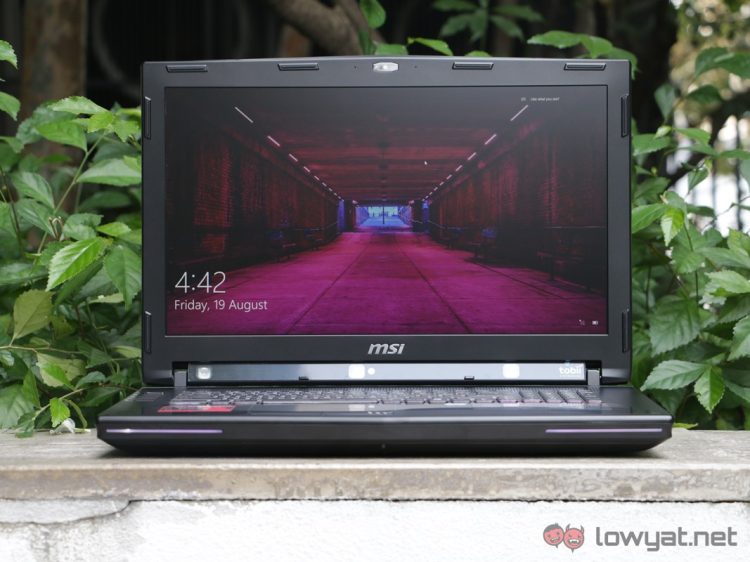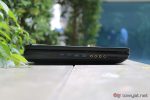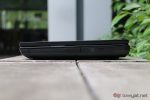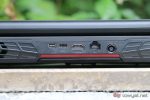The MSI GT72VR 6RE Dominator Pro Tobii is a mouthful to say, although it also happens to be the first laptop sporting Nvidia’s new mobile Pascal GPU to end up in our testing. It is also my first proper encounter with Tobii’s eye tracking technology; which really is something to experience. All this begs the questions, do these bells and whistles make for a good laptop? And does Nvidia’s GTX 1070 live up to the hype?
Specifications
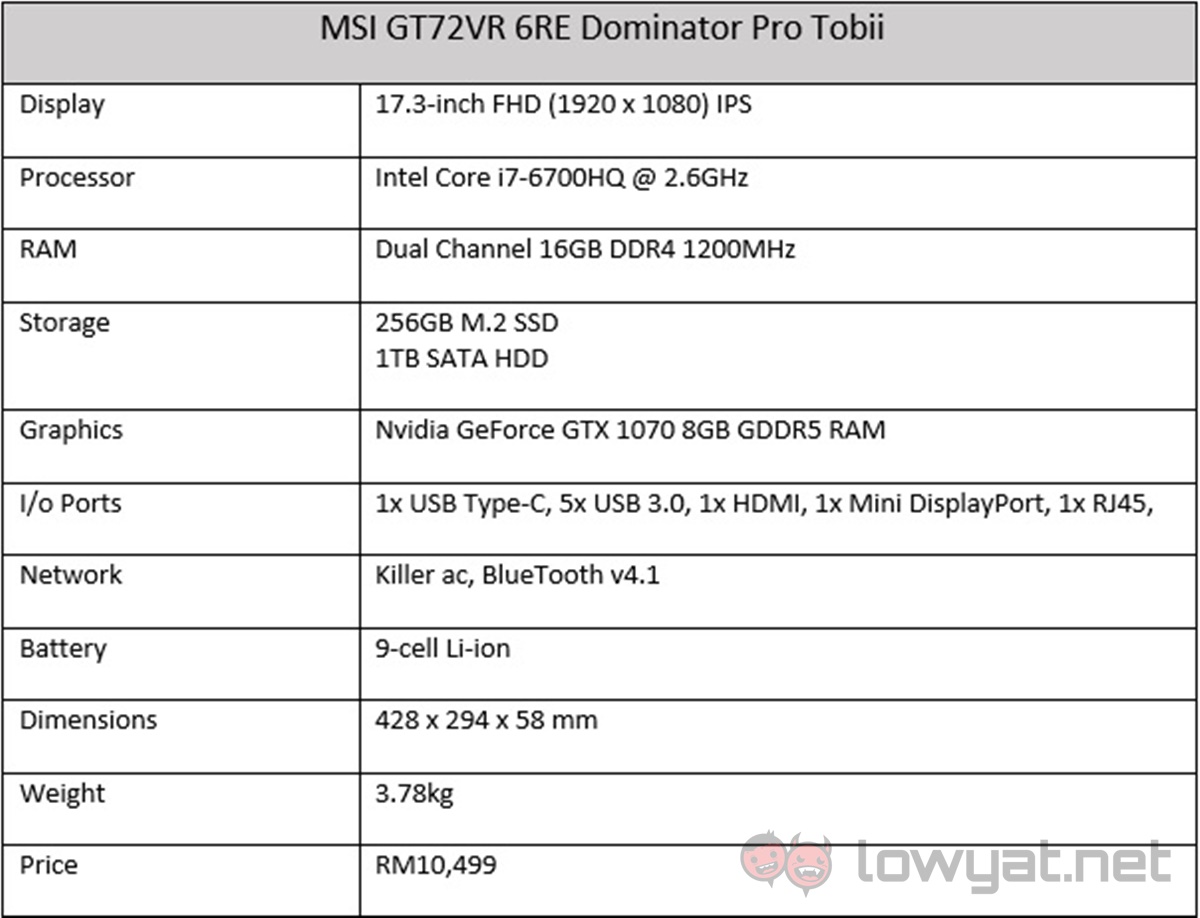
Design
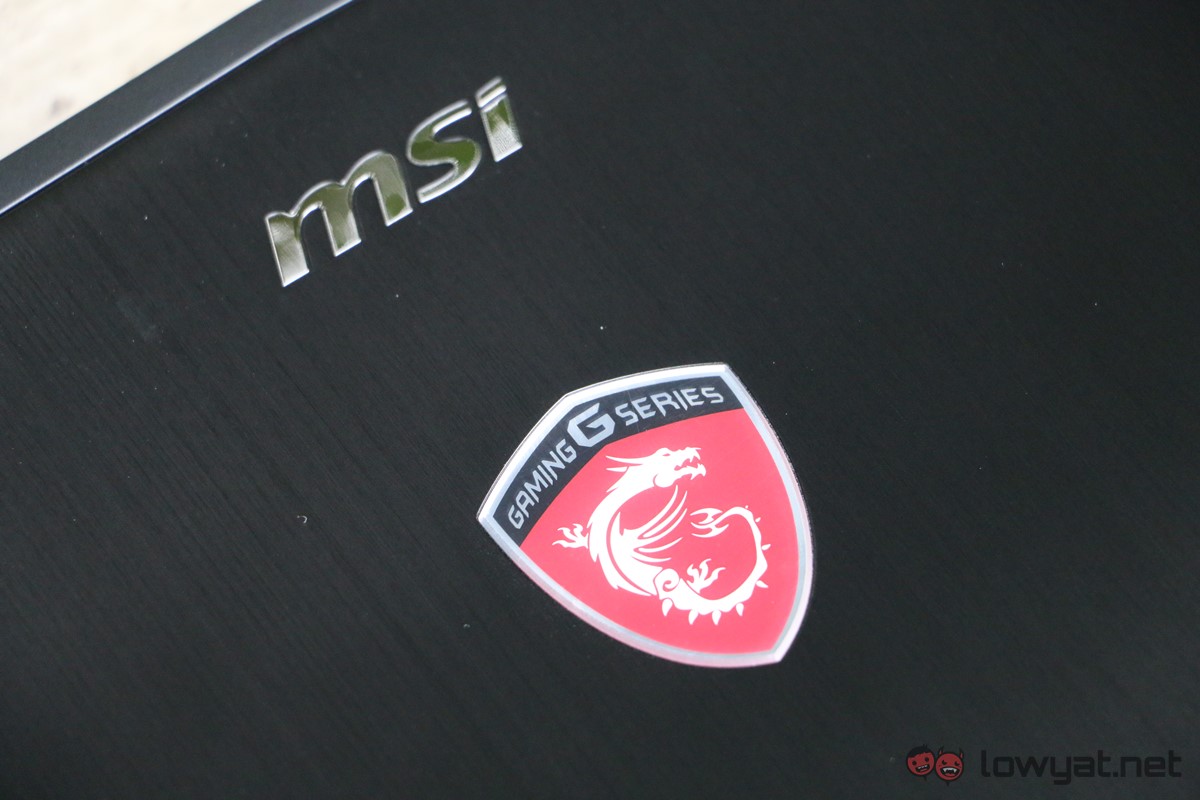
The MSI GT72 is easily a tale of two halves. That is, it is half extremely pleasing to look at; while simultaneously being disappointing. As far as the design is concerned, it maintains MSI’s signature style. The GT72 lacks the sleek lines of other gaming laptops, and instead embraces its chunkiness. You will not find many vents or faux-aerodynamics here. This is perhaps to MSI’s credit that the GT72 still manages to looks modern and exciting, without resorting to being over engineered.
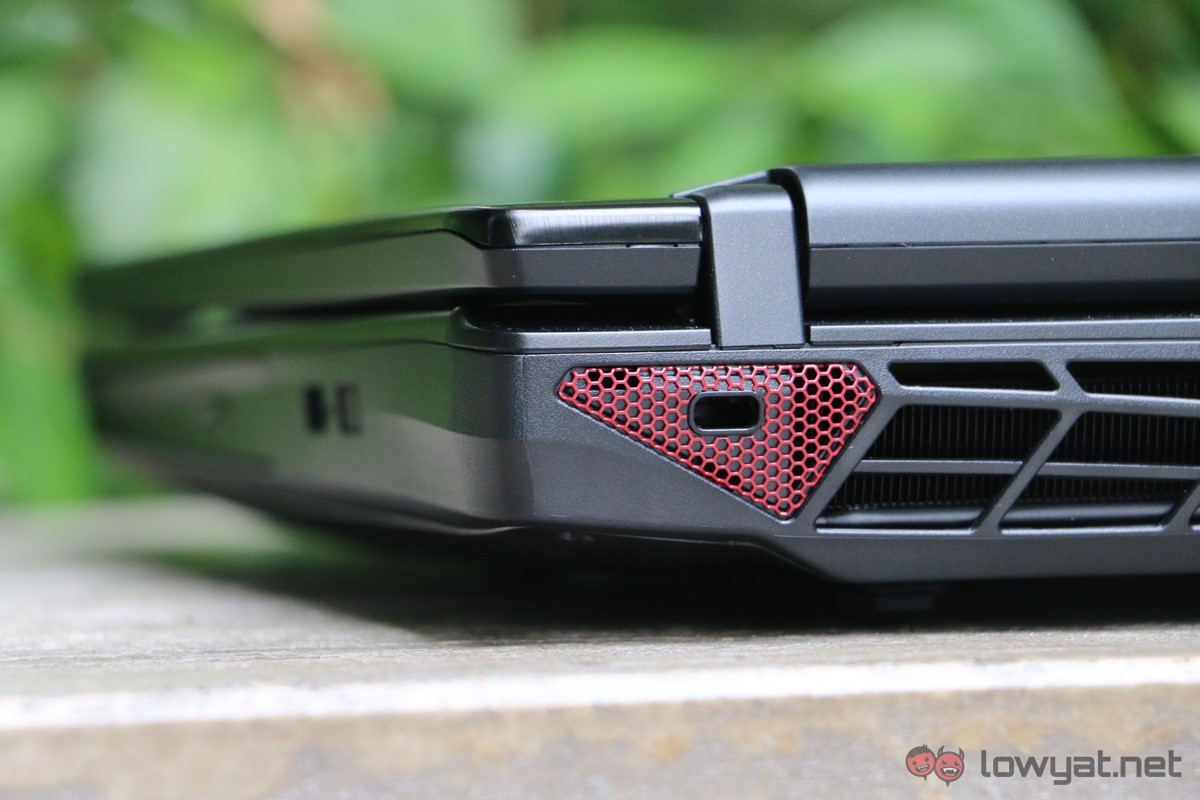
Despite this, there have been some questionable choices in the construction of the GT72. This primarily concerns the material of the plastic casing. Where the lid and palm rest of the GT72 are made of a pleasant hard plastic, the underside feels somewhat flimsy. That is not to say that it is of poor quality, rather it isn’t as pleasing to hold. Despite this, the inner frame that holds the actual hardware is solid; and certainly feels like the outer shell could have been a cost cutting measure on the part of MSI. Unfortunately, it hurts the overall feel of the machine.
Equally questionable is the distribution of the GT72’s I/O ports. The laptop has quite an impressive array of ports, and should be able to handle just about any peripheral put to it.
Interestingly, the GT72 includes not only dedicated headphone and microphone jacks, but also an audio out port. I assume that MSI believes that its users will want to hook their laptops up to a stereo system at some point, fully utilising the dedicated DAC by ESS. Still, more and more people are using laptops as mobile desktops these days and this option may be to help facilitate this.
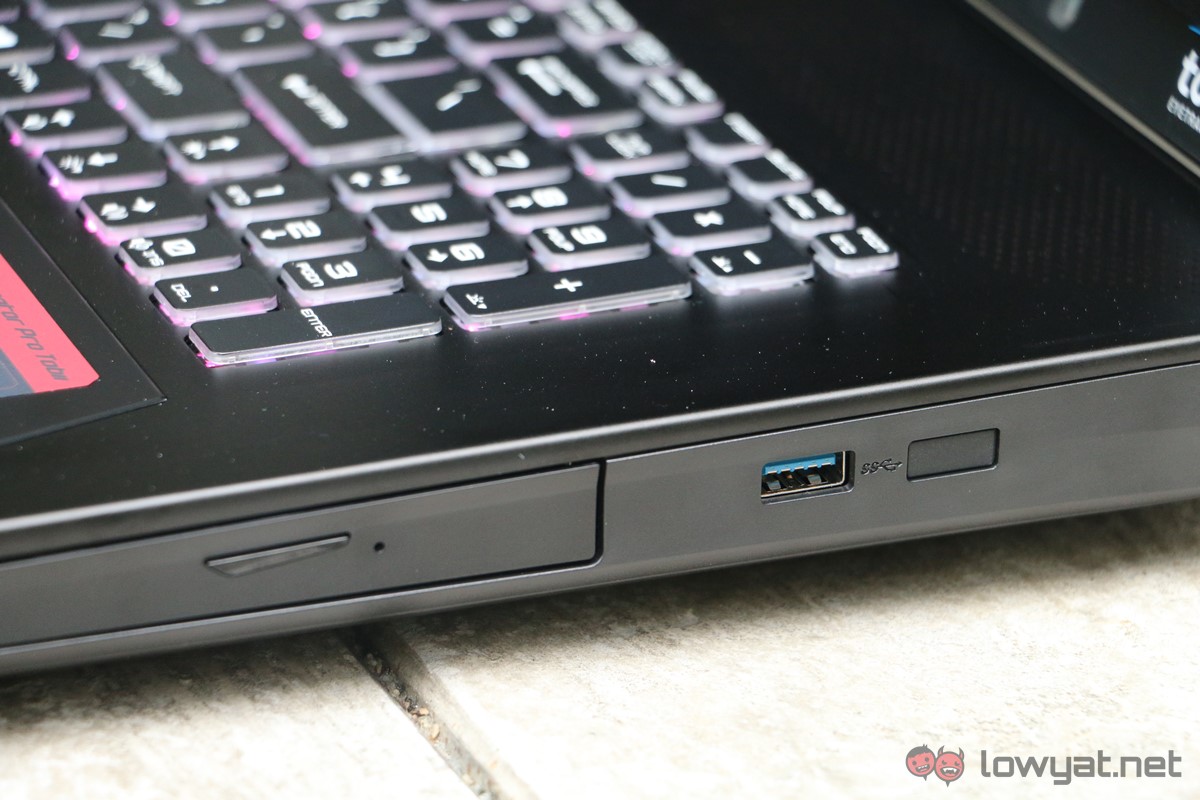
To be fair, the real question the distribution of the USB ports. The GT72 ships with five USB ports: four on the left and one on the right. The thing is that the port on the right is paired with a plug that makes it look like there should have been a sixth port at some point in the manufacturing process. It’s not even well hidden, which suggests it may be an optional upgrade for another USB 3.0 port or even a USB Type C port for higher-end variants.
Hardware
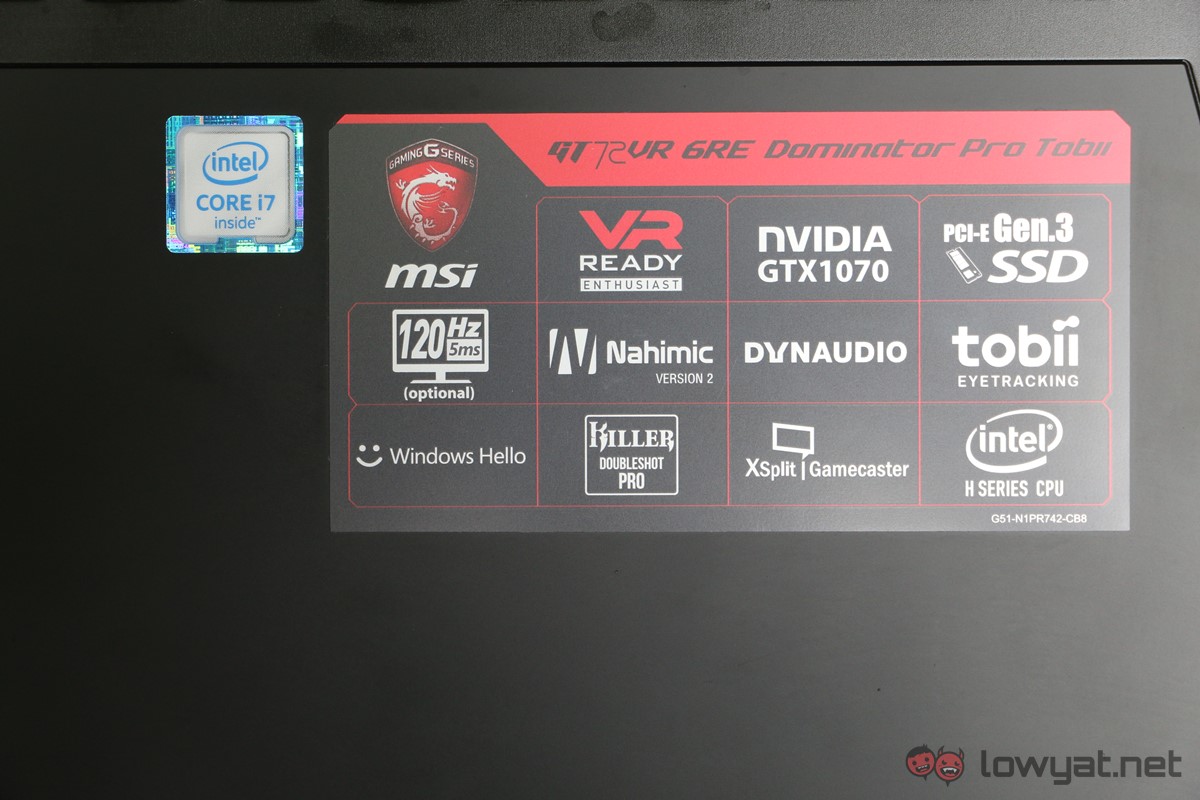
The real story of the GT72 is of course, the GTX 1070 GPU from Nvidia. Gamers have long awaited the promised desktop quality performance on a mobile platform; and I have to say that Pascal really does deliver – as the benchmarks below will reveal. However, there is a suspicion that this particular device (which we’re told is not a retail unit) has some issues with the driver, resulting in issues like severe frame rate drops and stuttering in Overwatch. Similarly, our PCMark8 and 3DMark benchmarks failed several times due to the driver crashing in the middle of the tests.
I manually updated the Nvidia drivers to ensure that it wasn’t just a driver issue that was causing the problems. However, the benchmarks still experienced issues. However, the stuttering in Overwatch stopped; only to be replaced by the game simply crashing completely. It happened again while testing Battlefield 4. For the moment, it looks like the drivers for the GTX 1070 still need work; although Nvidia and MSI still have time to track down the problem and issue a fix.
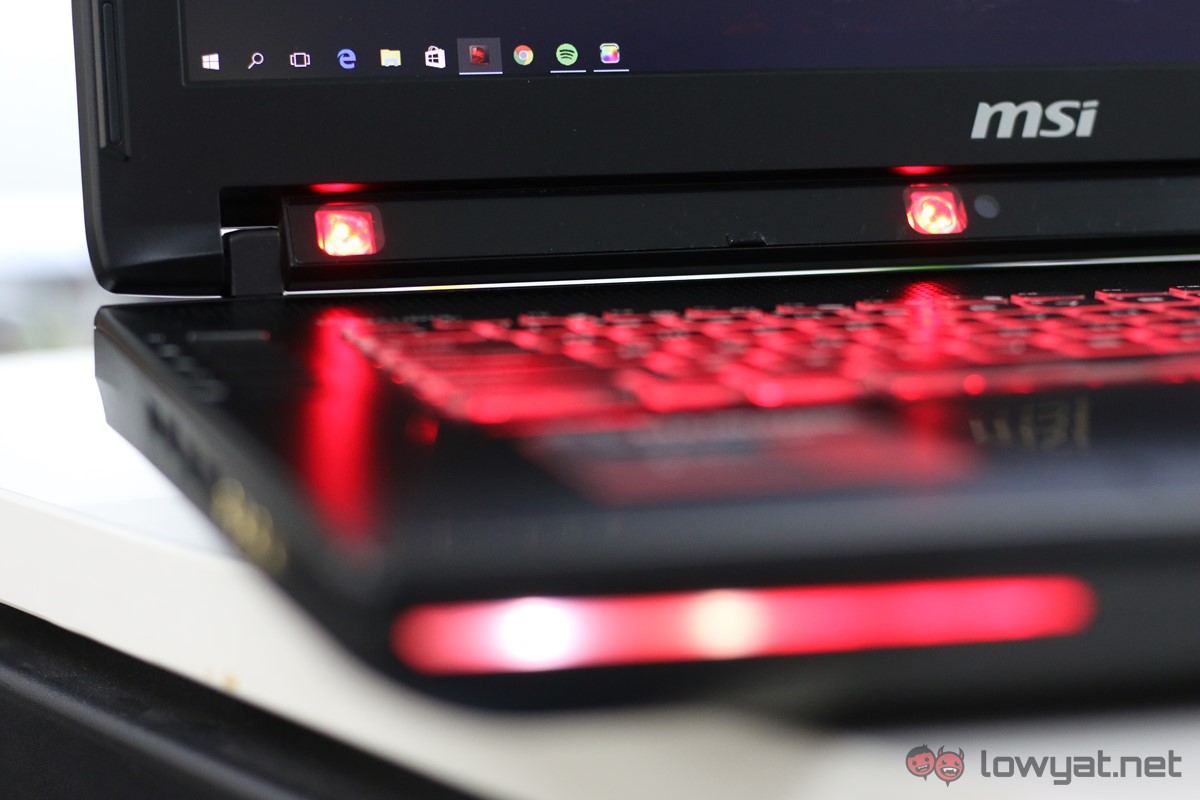
Aside from the rather minor GPU problems, the GT72 handles like a dream. It packs an Intel Core i7-6700HQ processor, and the other hardware configurations are just as generous: 16GB DDR4 RAM, two storage drives (256GB M.2 SATA SSD + 1TB 7200rpm HDD), and even a Blu-Ray writer.
Benchmarks






The gameplay benchmarks paint the picture of a highly capable GPU within the mobile GTX 1070. However, it should be noted that the actual frames displayed during the Crysis 3 testing varied wildly. While it was impressive overall, there were spots were the graphics card struggled and fps dropped below 60 on the Very High and High presets. The lowest point observed was actually around 44fps; during which there were a lot of particle effects from a fire on screen.
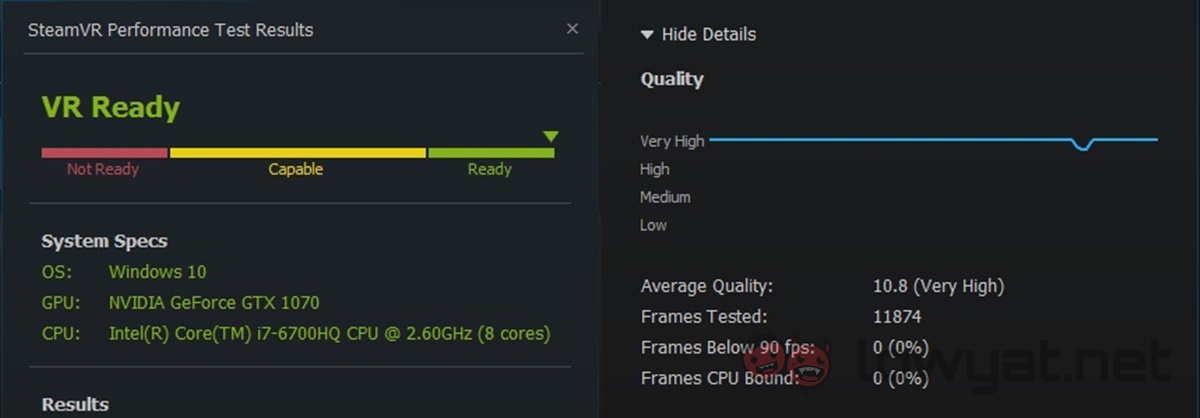

User Experience
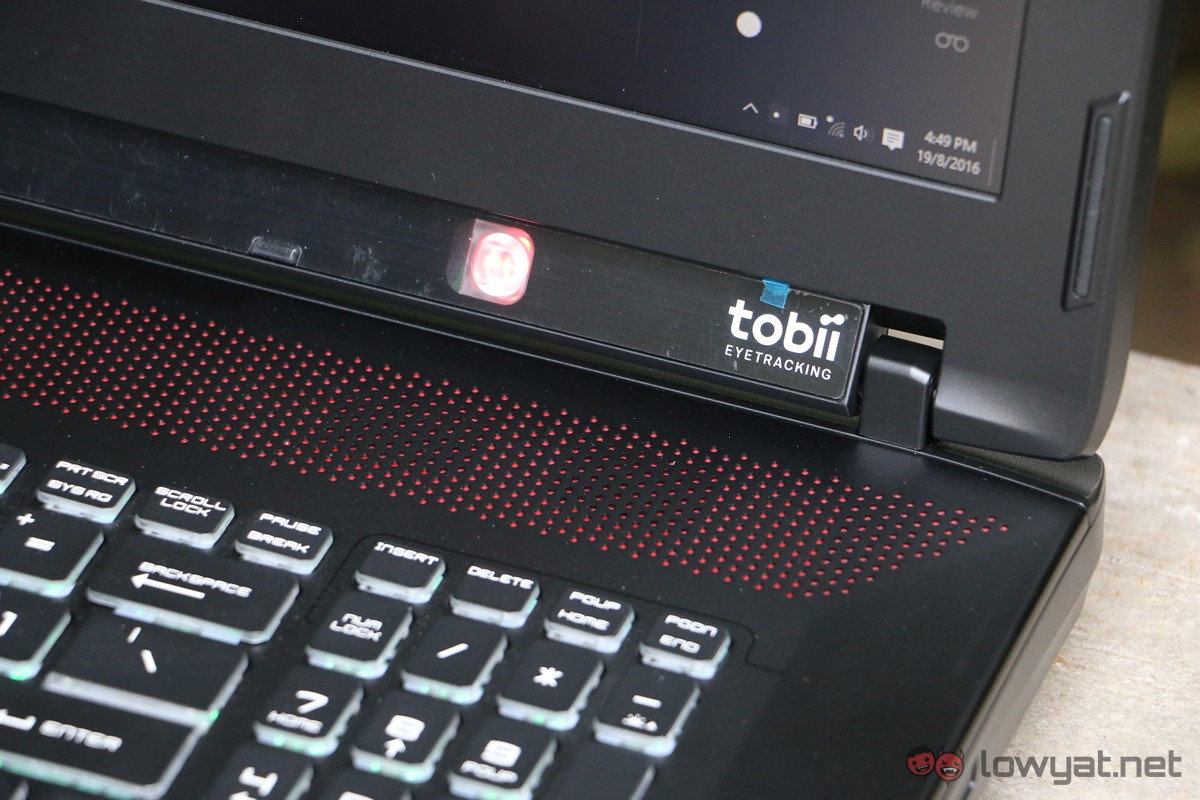
The inclusion of MSI’s Tobii eye tracking technology provides the GT72 with an entirely different user experience. The idea is that there is a multi-camera setup capable of tracking eye movements; which also allows for Windows Hello to be used. However, in my experience, the eye tracking technology’s best benefit is saving on battery power by shutting off the display when people are not looking at it.
The laptop detects and tracks nearby eyeballs, and if it doesn’t detect any it dims the display. If someone begins looking at the screen again, everything lights back up. It’s quite something to experience; the software can even be set up to wake the GT72 when you return to it. Having a laptop aware of your presence is quite a new and personally exciting experience; and adds that little extra touch of intimacy.
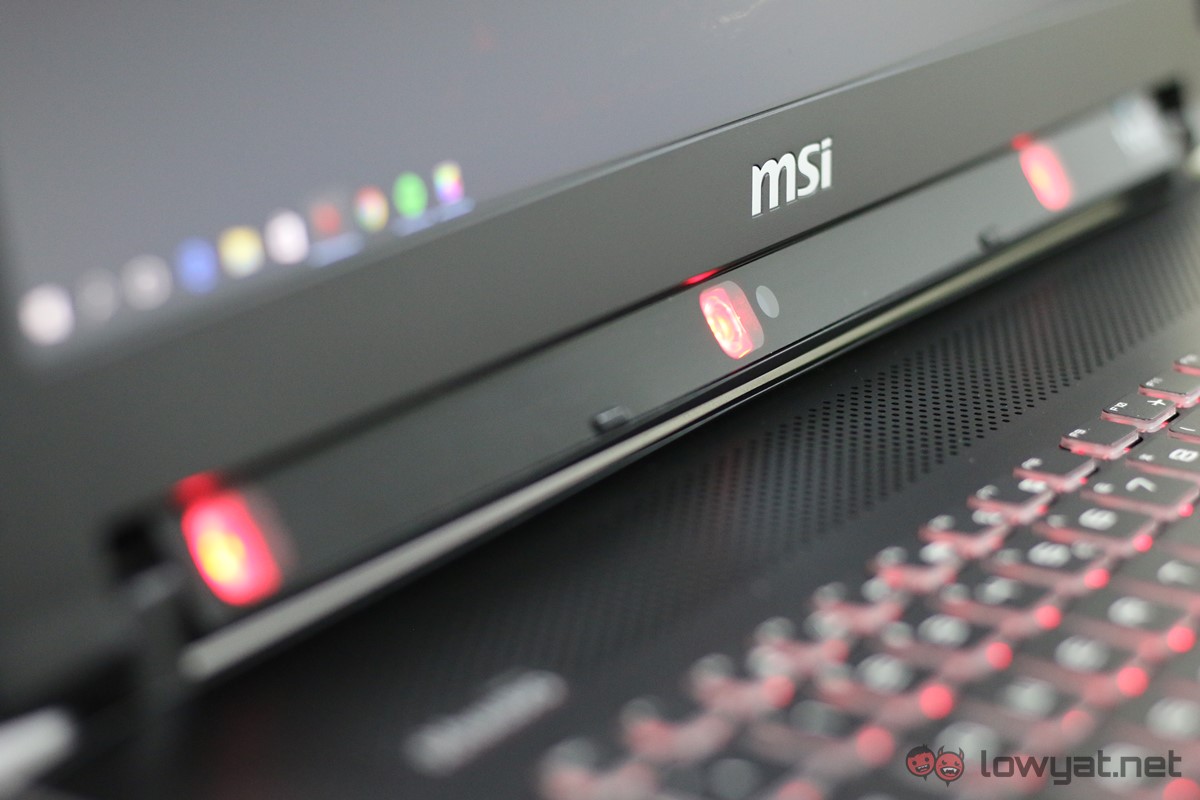
Of course, there is also the mechanical benefit of only keep the display lit when someone is using it. Battery life is extended this way; although there isn’t much of a way to test how much extra life it results in. It may not be all that much, but every little bit helps in this case.
You could even use the eye-tracking technology in some games that support the technology, such as The Division and some Assassin’s Creed titles. You shouldn’t. It really messes up with muscle memory – it just feels weird to look up for your in-game character to do the same a split second later.
On the other hand, the GT72’s RGB backlit keyboard feels very much geared towards gaming – though it shouldn’t be shocking. The spacing and placement of the keys leans heavily towards first person shooters; the Windows key, for example, is moved to the right to prevent accidental hits. The keys themselves are rather stiff, and have plenty of travel (which shouldn’t be a surprise for a device this thick and at this price point).
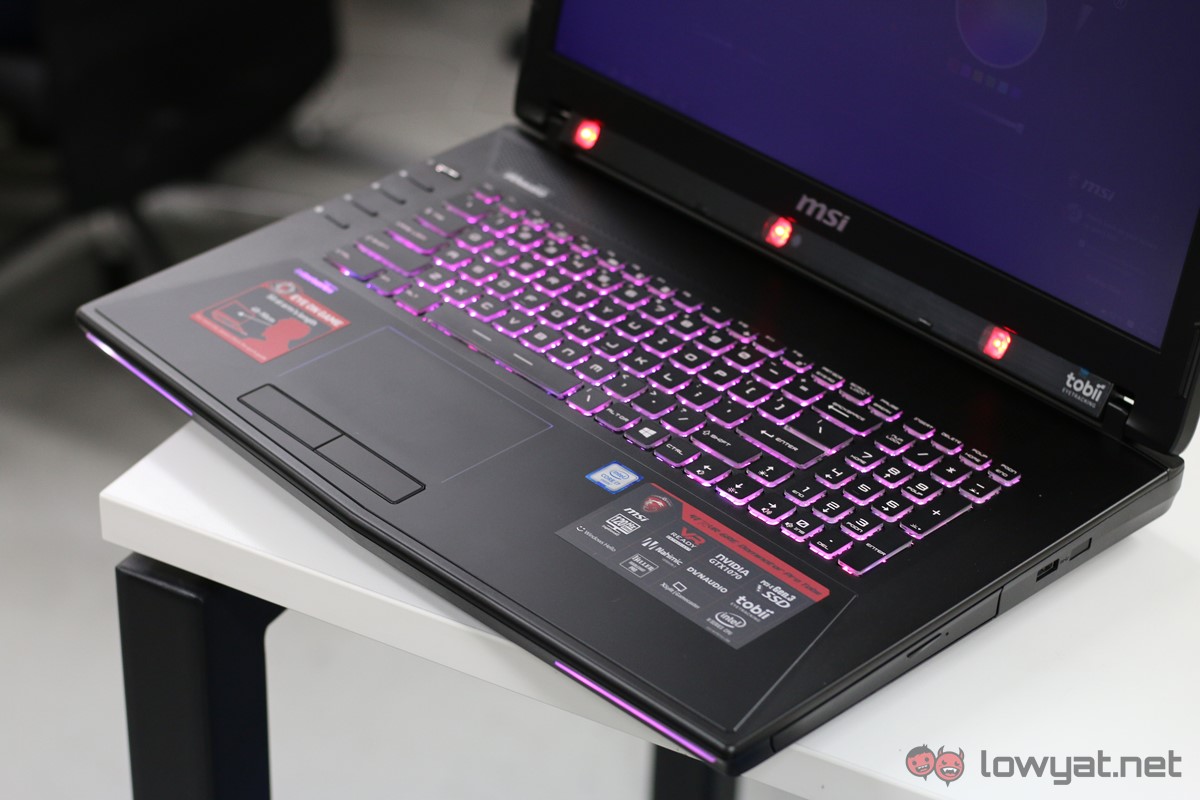
One thing I couldn’t fully test was the claim that the GT72 is capable of handling virtual reality gaming. This was more about our lack of VR headsets in the office rather than any comment on the laptop’s hardware. However, considering that the Steam VR test indicates that it is perfectly fine for VR gaming; I would be inclined to believe the claim.
The GT72 follows all of MSI’s “VR Ready” 2016 gaming laptops, where its external display ports are all located at the back of the device. HDMI, mini DisplayPort, and even a USB Type C port are all here for easy connections to VR systems.
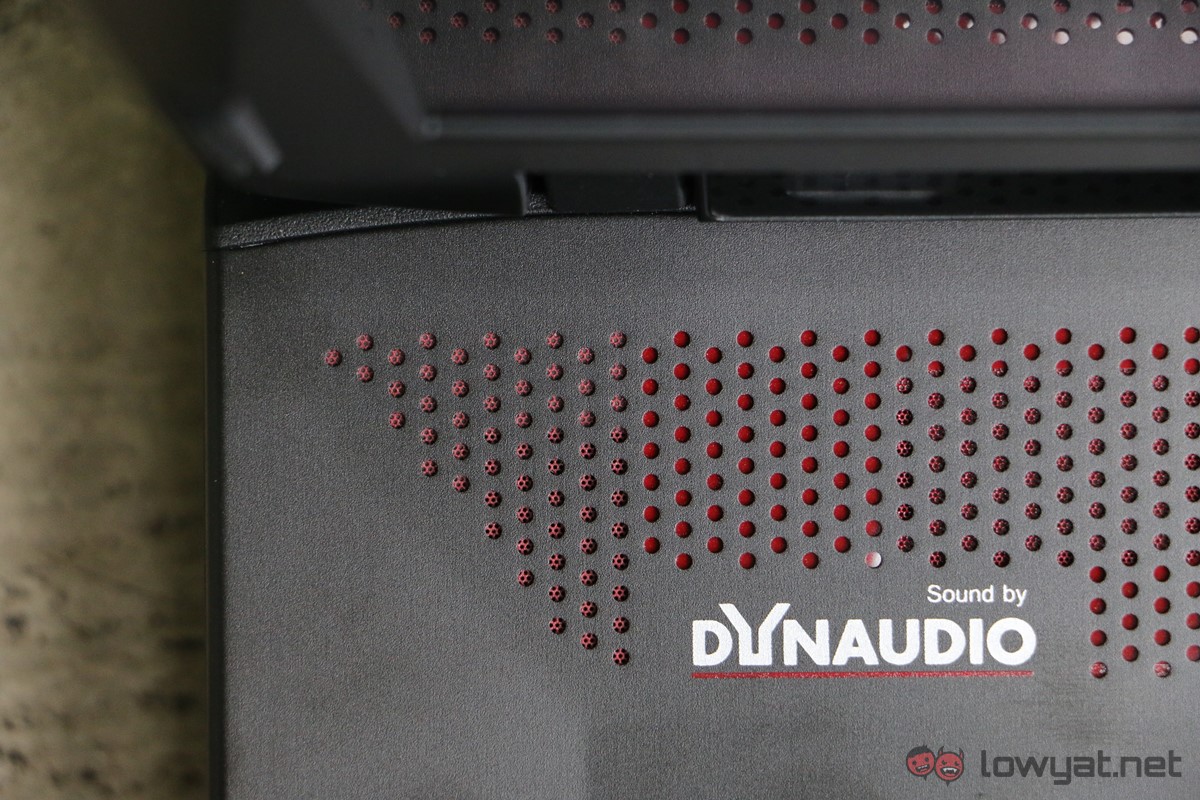
As a gaming laptop, the GT72’s audio system is naturally tuned to enhance the gaming experience. The audio prioritises lower frequencies; even when headphones are used, resulting in sometimes unnaturally booming bass. Despite this, the tiny subwoofer may be insufficient for the task at hand. You can of course edit them should you wish to listen to some music – again, the ESS Sabre DAC will make the experience that much better.
Competition
This is the section where we usually compare the current laptop under review with other models that offer similar features and specifications. However, it is difficult to suggest alternatives here; considering that this is the first laptop we’ve had that features Nvidia’s Pascal GPU. That being said, comparisons can still be drawn based on price and hardware specifications; because we should be honest and say that price is the biggest factor when buying laptops.
Illegear S7
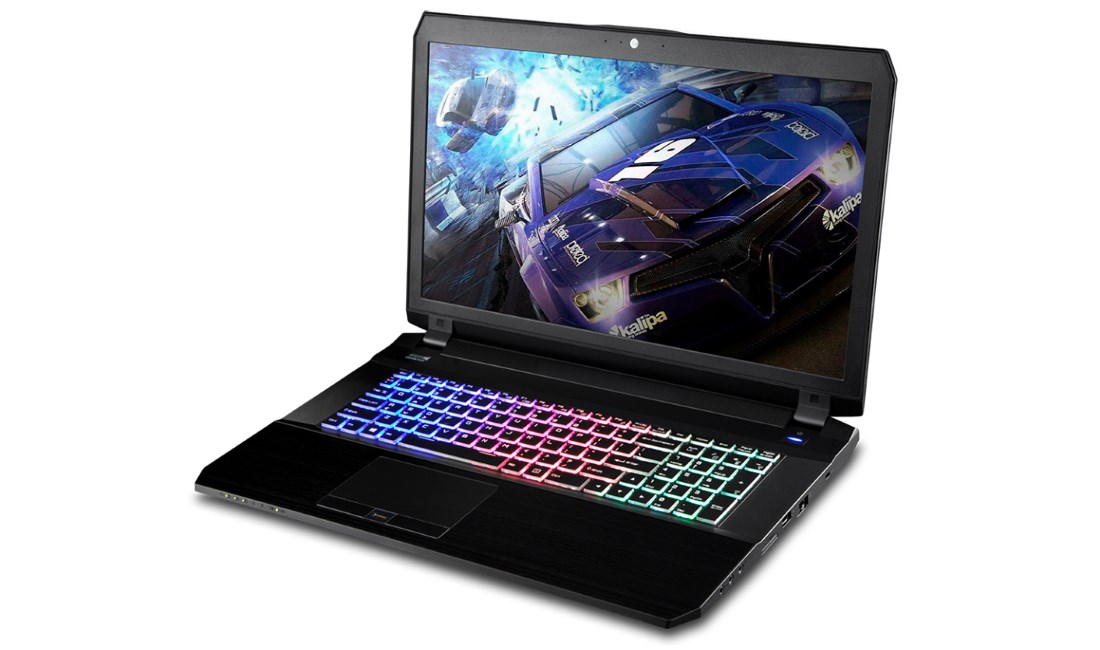
The customisation options offered by Illegear allows us to get something rather similar in price and specifications to the GT72. For under RM10,000, we get the same 16GB DDR4 RAM, GTX 1070, 1TB HDD, 256GB SSD, and 1080p display. However, the processor is bumped up to an unlocked Intel Core i7-6700HK processor; providing a bump in computing power. It shouldn’t matter much for gaming – though there’d be a difference should you be doing other processor-intensive tasks.
Despite this, the S7 lacks the bells and whistles available to the GT72. There is a slight difference in price, but MSI includes both an Blu Ray writer and the Tobii eye-tracking system – which is the standout feature found only on two MSI laptops. Those interested in raw power may think that the tradeoff is worth it for the unlocked processor; but others may appreciate having a few extra options.
TechArmory Commandos S17EX
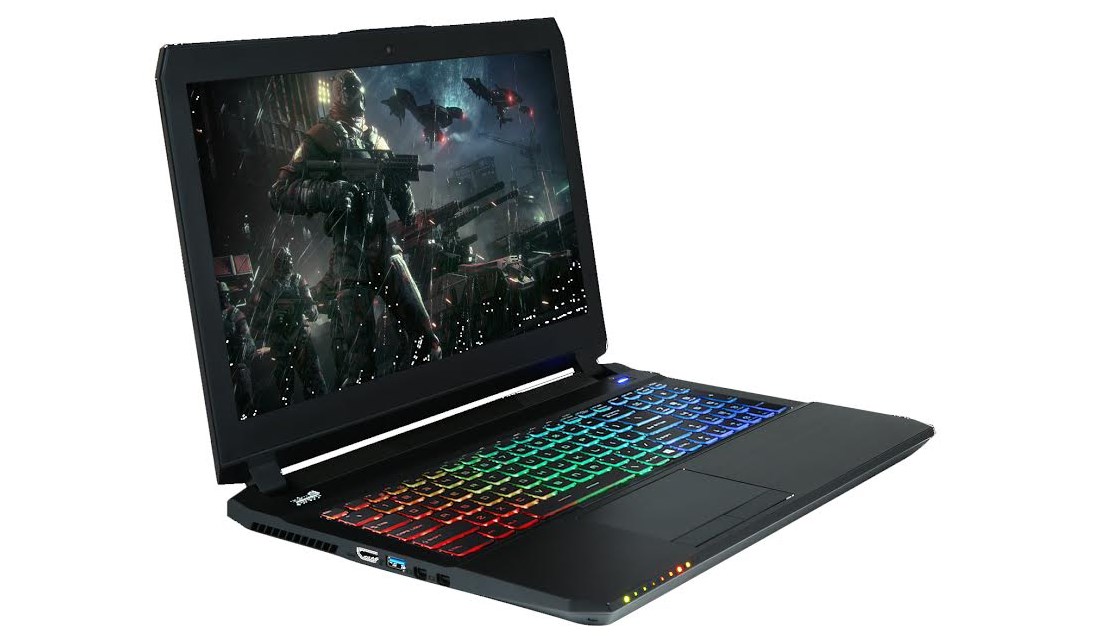
Local brand Techarmory also offers a gaming laptop with specifications similar to both the Illegear and MSI. It has the same display size, RAM, GPU, HDD, and SSD. It has the same Intel Core i7-6700HQ processor as the GT72. Interestingly. TechArmory’s site lists this configuration for only RM8,740; a relative bargain compared to what MSI is asking.
Of course, this begs the question of whether the Tobii eye-tracking system (and of course, MSI’s brand) is worth investing an extra RM2,000 or so. That’s a lot to be asking for, and not everyone will take full advantage of the eye-tracking capabilities. In the end, the question is perhaps one of whether one can afford the extra feature.
Conclusion
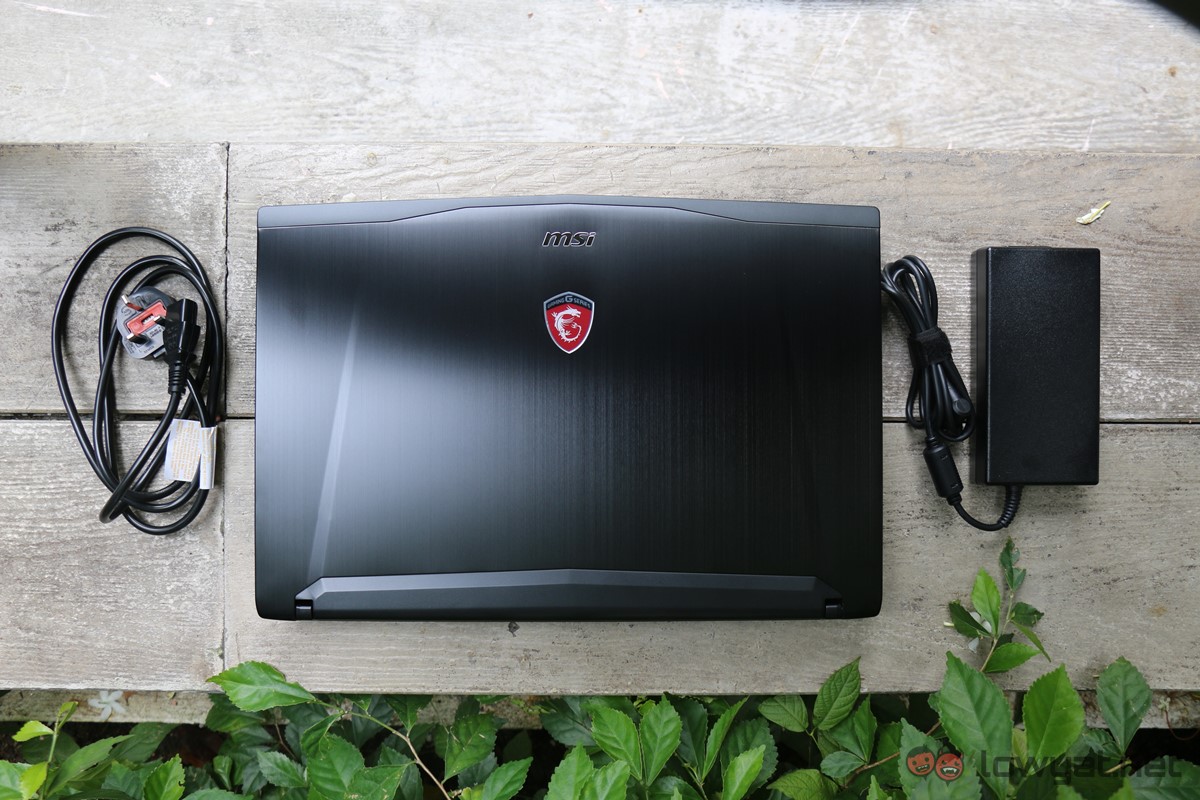
It is difficult to say that the GT72 is a worthy addition to MSI’s stable of gaming laptops. While the build and user experience were notable – particularly due to the addition of Tobii – there were too many problems with the graphics drivers to give this a perfect score. Granted, MSI will likely get the problem solved in due time, and not to mention the fact that this is the first wave of Pascal GPUs for notebooks.
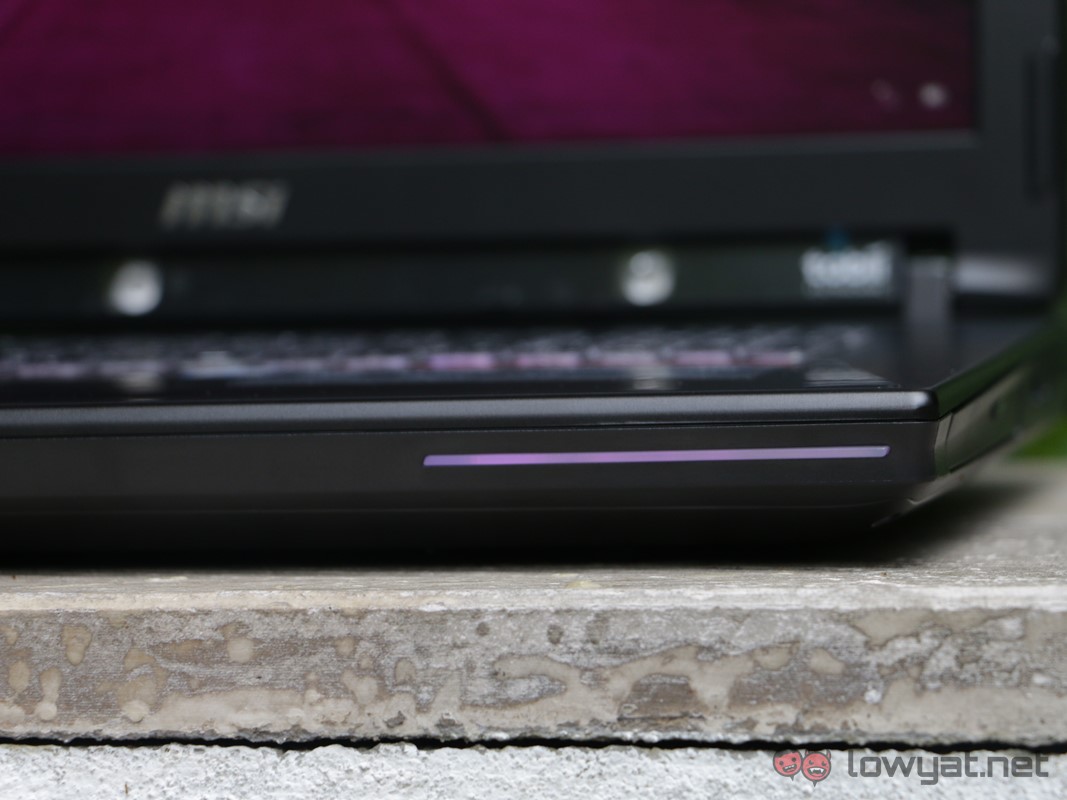
Overall, the GT72 is a perfectly fine gaming laptop. The price may not as reasonable for the amount of performance provided, but I personally love the eye-tracking feature and the implementations. Unfortunately, the plastic body (particularly the underside) does leave space for improvement.

